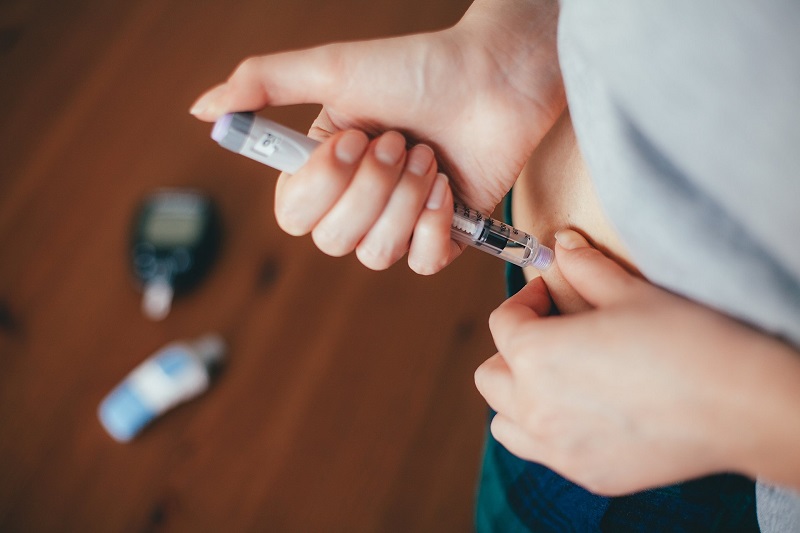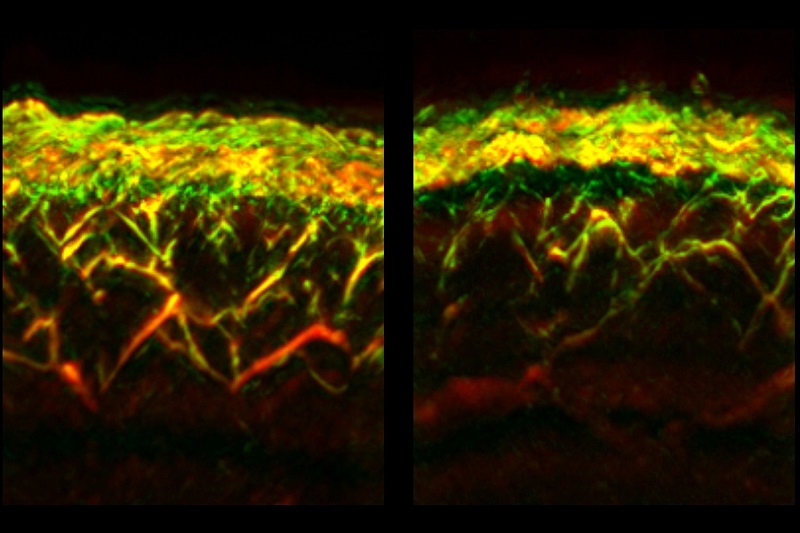
Optoacoustics, AI Monitor Disease in Patients With Diabetics
One complication of diabetes is microangiopathy, a condition affecting the microvasculature, which affects numerous organs, including the skin. Routine examinations of the skin’s microvasculature could help clinicians better manage diabetes patient care by providing quantitative metrics of systemic changes in the skin due to disease progression.
Optoacoustic mesoscopy can provide high-resolution, detailed imaging of the microvasculature in vivo because of the strong contrast it obtains from vascular structures. It offers high-resolution, 3D visualization through the entire epidermal and dermal layers of the skin and can reach depths of up to several millimeters, depending on the wavelength used.

Researchers at the Technical University of Munich (TUM) and Helmholtz Munich combined artificial intelligence (AI) and high-resolution optoacoustic imaging technology to develop a method to assess disease progression in diabetic patients by measuring microvascular changes in the skin. Courtesy of iStockphoto.com/agrobacter.
Raster-scan optoacoustic mesoscopy (RSOM), developed at the Technical University of Munich (TUM) and Helmholtz Munich, applies optoacoustic mesoscopy to the study of diabetes. The research team, led by professor Vasilis Ntziachristos, combined RSOM with an artificial intelligence (AI) algorithm to study the effects of diabetes on the human skin and how different features of the skin relate to diabetes complications.
The researchers applied an AI approach to 3D RSOM images of the skin of study participants, taken at resolutions reaching single-capillary dimensions. The team obtained RSOM images from 115 participants (40 healthy persons and 75 patients with diagnosed diabetes), and automatically segmented the skin layers and microvasculature with machine learning. The researchers used AI to process the RSOM-extracted features that had clinical relevance, as opposed to other potential RSOM-extracted features that could be computed but had no clinical meaning.
Using formulas to analyze the segmented skin layers and microvasculature, the researchers quantified 64 features that could relate to the pathophysiological processes underlying diabetes. In a second AI step, using a random forest classifier, they identified 32 features that related the most to diabetes. These features were categorized into three scales of architectural detail — the microscale (<100 μm), the mesoscale (~100 to 1000 μm), and the macroscale (>1000 μm).
The researchers found that features belonging to the mesoscale category were more sensitive to diabetes and diabetes severity, compared with microscale and macroscale features. The team further found that previously unobserved dermal features were significantly affected by diabetes, often in ways that differed from changes in more superficial skin layers.
The association of the 32 selected features with diabetes progression was performed against clinically assessed diabetes grading based on symptoms such as the presence of peripheral neuropathy or atherosclerotic cardiovascular disease.
The team compiled the 32 skin features most relevant to diabetes into a “microangiopathy score” and showed that the score could be used to discriminate diabetes with an area under a receiver operating characteristic (ROC) curve of 0.84. The predictive value of the microangiopathy score was controlled against age variations.

RSOM images of the skin of a healthy volunteer (left) and a patient with diabetes. Courtesy of Nikoletta Katsouli/TUM.
Unlike biopsies of skin tissue, which are invasive and do not accurately represent in vivo conditions, RSOM measurements are noninvasive, take less than a minute, and do not rely on radiation or contrast agents. “Other optical methods do not achieve the depth or the detail reached by RSOM,” researcher Angelos Karlas said.
Data on different depths of the skin can be obtained simultaneously from a single RSOM measurement. This capability enabled the researchers to determine, for the first time, that diabetes affects vessels differently at different skin layers.
“With RSOM, we can now quantitatively describe the effects of diabetes,” Ntziachristos said. “With the emerging ability to make RSOM portable and cost-effective, these findings open up a new way for continuous monitoring of the status of those affected. In the future, with fast and painless examinations, it would take just a few minutes to determine whether therapies are having an effect, even at home environments.”
The research was published in Nature Biomedical Engineering (www.doi.org/10.1038/s41551-023-01151-w).
/Buyers_Guide/Imec/c22187